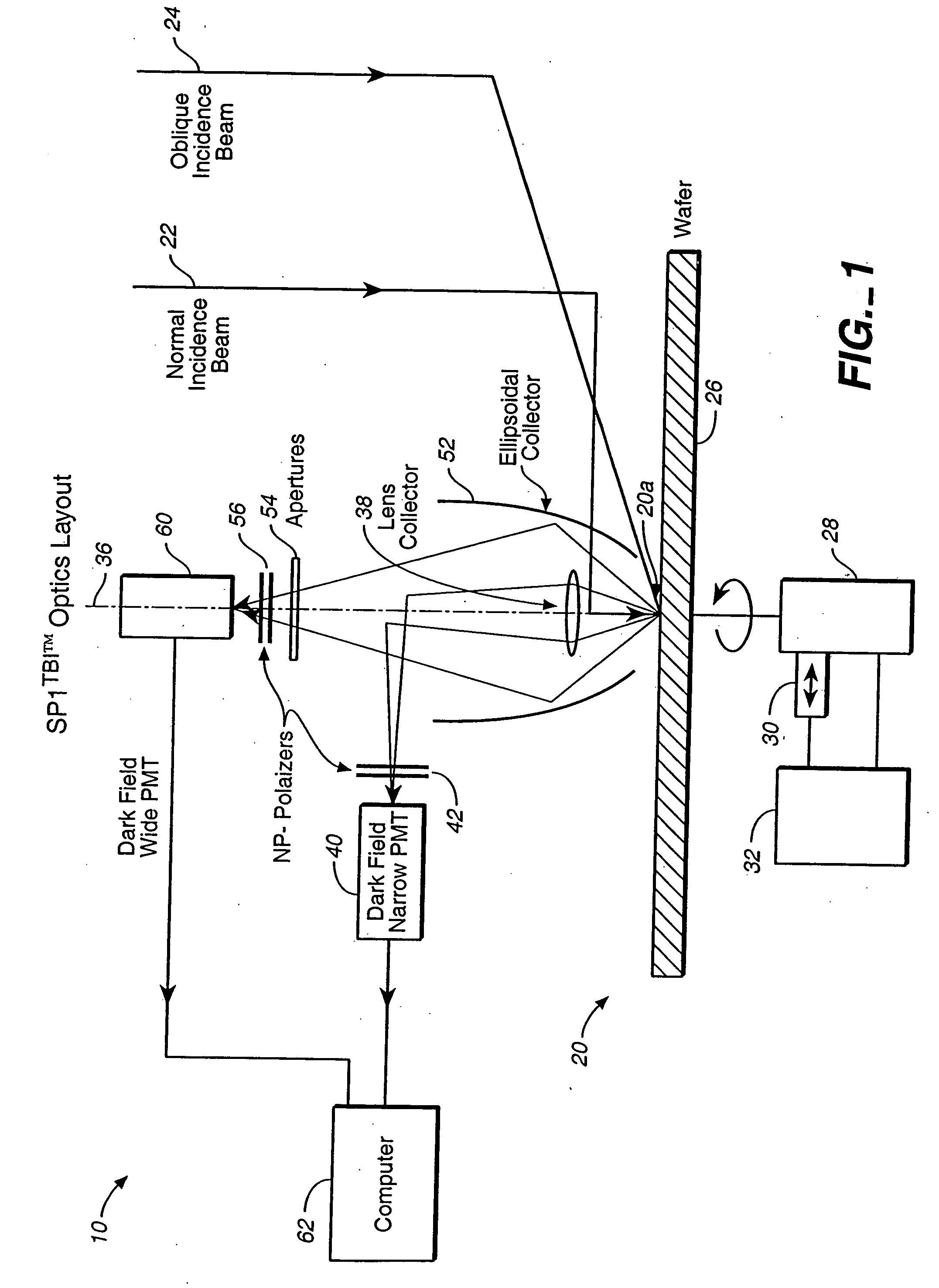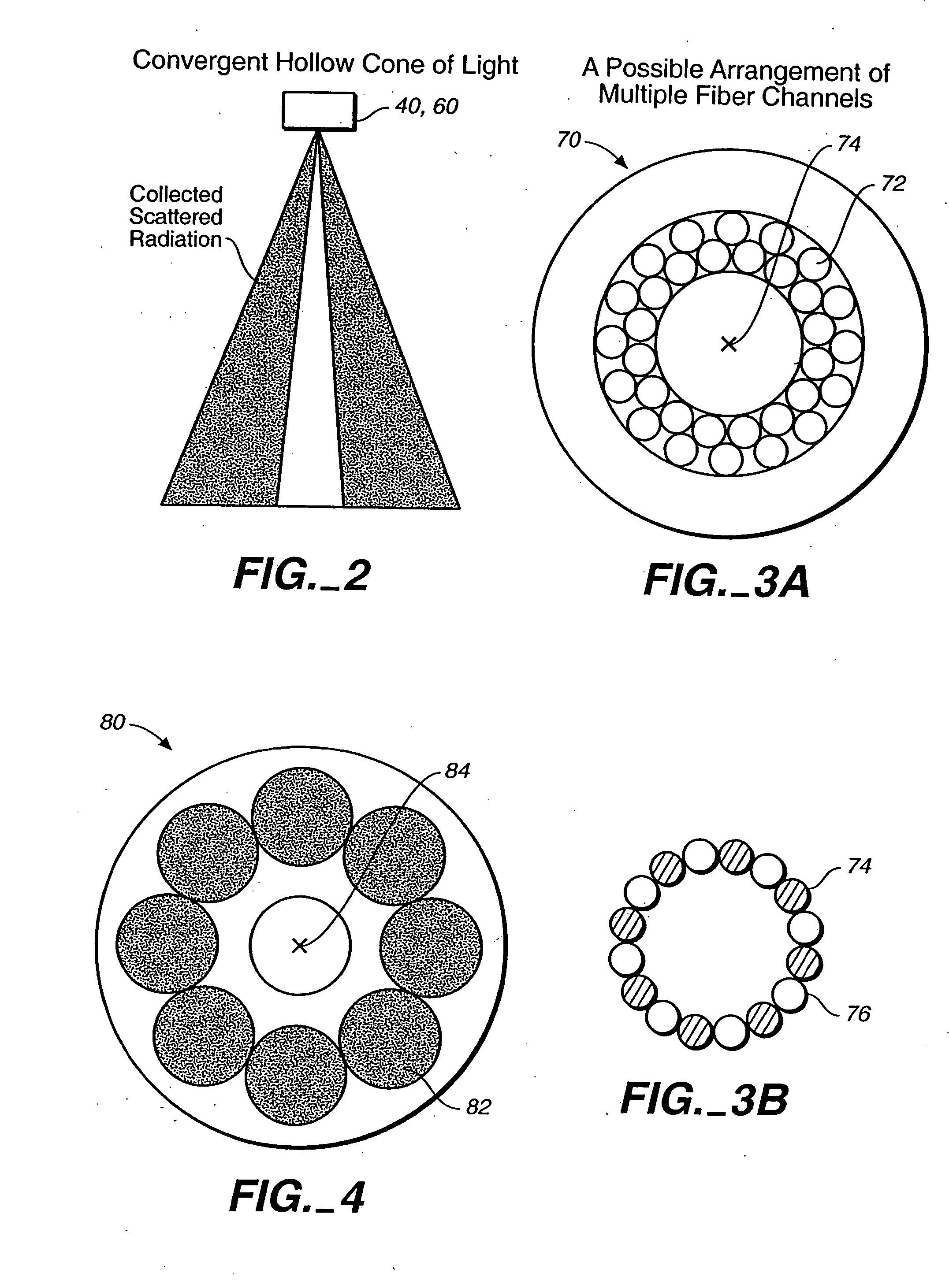Defect detection system
a detection system and defect technology, applied in the field of defect detection, can solve the problems of system design, system optimization, single detector output becoming saturated, etc., and achieve the effect of facilitating the process of real-time defect classification and reducing cross-talk
- Summary
- Abstract
- Description
- Claims
- Application Information
AI Technical Summary
Benefits of technology
Problems solved by technology
Method used
Image
Examples
Embodiment Construction
[0041]FIG. 1 is a schematic view of the SP1TBI system 10 available from KLA-Tencor Corporation of San Jose, Calif., the assignee of the present application. Aspects of the SP1TBI system 10 are described in U.S. patent application Ser. No. 08 / 770,491, filed Dec. 20, 1996 and U.S. Pat. No. 6,201,601, both of which are incorporated in their entireties by reference. To simplify the figure, some of the optical components of the system have been omitted, such as components directing the illumination beams to the wafer. The wafer 20 inspected is illuminated by a normal incidence beam 22 and / or an oblique incidence beam 24. Wafer 20 is supported on a chuck 26 which is rotated by means of a motor 28 and translated in a direction by gear 30 so that beams 22 and / or 24 illuminates an area or spot 20a which is caused to move and trace a spiral path on the surface of wafer 20 to inspect the surface of the wafer. Motor 28 and gear 30 are controlled by controller 32 in a manner known to those skill...
PUM
| Property | Measurement | Unit |
|---|---|---|
| elevational collection angles | aaaaa | aaaaa |
| cell size | aaaaa | aaaaa |
| cell size | aaaaa | aaaaa |
Abstract
Description
Claims
Application Information
 Login to View More
Login to View More - R&D
- Intellectual Property
- Life Sciences
- Materials
- Tech Scout
- Unparalleled Data Quality
- Higher Quality Content
- 60% Fewer Hallucinations
Browse by: Latest US Patents, China's latest patents, Technical Efficacy Thesaurus, Application Domain, Technology Topic, Popular Technical Reports.
© 2025 PatSnap. All rights reserved.Legal|Privacy policy|Modern Slavery Act Transparency Statement|Sitemap|About US| Contact US: help@patsnap.com



